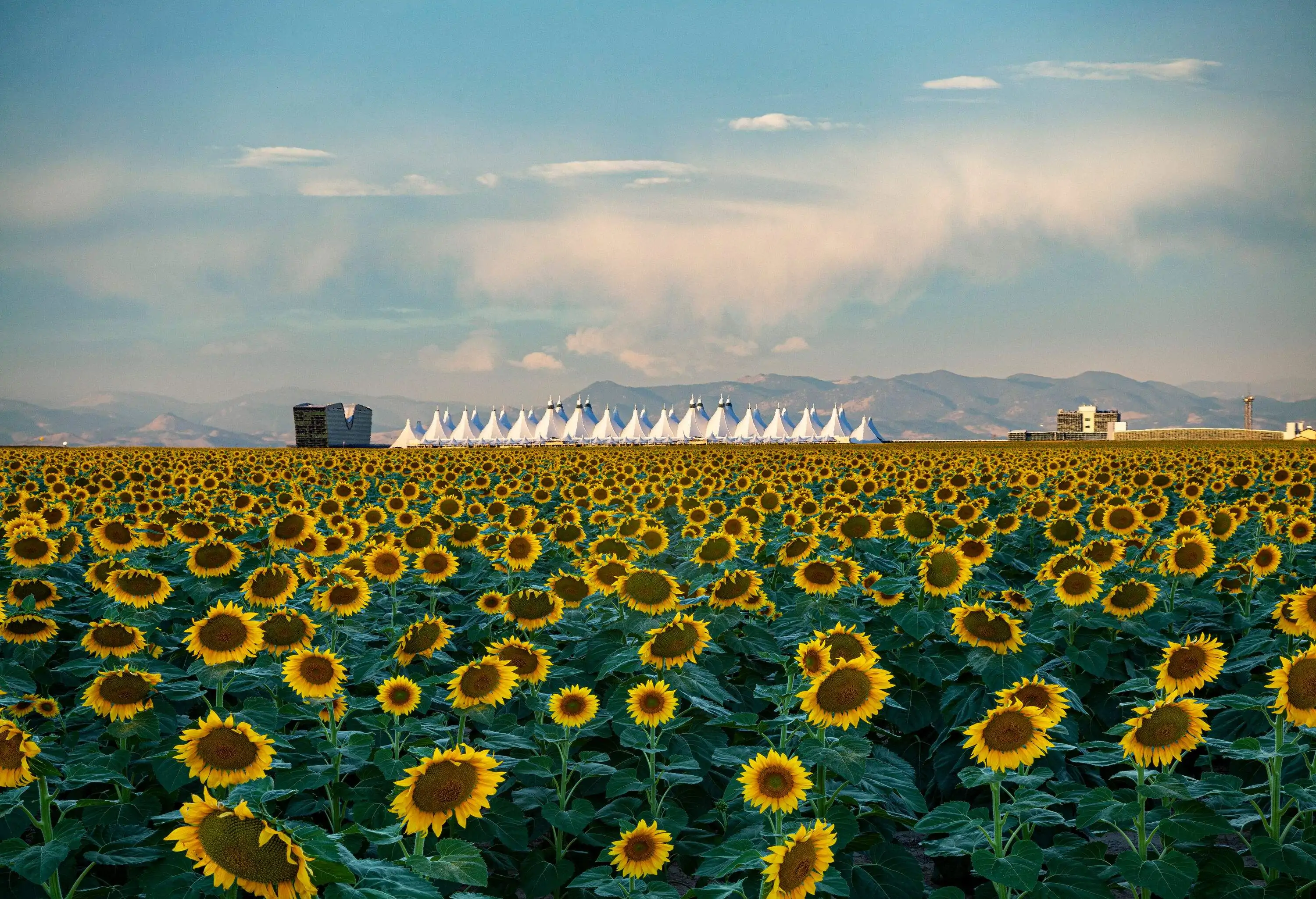Wishing for a little luck? For centuries, folks have been performing rituals to attain good luck like following feng shui principles or carrying lucky charms. The same goes for travelers who have been making pilgrimages to statues, monuments and natural wonders worldwide in search of love, fertility, health, wealth, happiness or plain ol’ luck.
Luck: “the things that happen to a person because of chance – the accidental way things happen without being planned,” according to Merriam Webster dictionary, can seem elusive, but why not try to up your chances by traveling to these places around the world to bring good luck?
The Blarney Stone, Cork, Ireland
Tourists have been taking the nearly four-hour trek from Dublin, Ireland to visit the Blarney Castle & Gardens for hundreds of years. In its third incarnation (the first castle was built of wood and the second of stone), the Blarney Castle was built in 1446. A highlight is kissing the Blarney Stone, a block of carboniferous limestone whose origins are debatable. For 200 years, visitors have climbed steps to reach the stone, which is set in the wall below the battlements. Visitors must lean back (there is now an iron rail to hold on to; in the past, visitors were held by their ankles) and kiss the stone, which is said to bring the gift of eloquence to those who pucker up.
Fushimi Inari Taisha, Kyoto, Japan
Built in 711 A.D. in honor of Inari, the god of rice, Fushimi Inari Taisha has attracted believers for centuries to Kyoto, Japan. Located at the base of Inari Mountain in Kyoto, it is believed the folks who come to this temple to pray will be granted luck, particularly, with business dealings.
Bull Mosaic, Milan, Italy
The bull in the Galleria Vittorio Emanuele in Milan, Italy is a victim of locals and foreigners in search of wealth and good fortune who plant their right heels onto the bull’s private parts and spin in a complete circle.
Charging Bull, New York, New York
Artist Arturo Di Modica created the 7,000-pound sculpture of the charging bull after the Stock Market Crash on Oct. 19, 1987. The Charging Bull statue was made to celebrate the spirit of the American people. The 18-foot long and 11-foot high bull was originally dropped off by the artist in front of the New York Stock Exchange on Dec. 15, 1989, but New York City officials moved it the same day and placed it on Broadway in Bowling Green, a few blocks from Wall Street. A myth has developed over time that folks who rub the bull’s testicles will have good luck financially.
Wishing Tree, Lam Tsuen, Tai Po, Hong Kong
People started to use “paper” joss sticks (incense) to pray to gods in the Song Dynasty (960 A.D. to 1279 A.D.). A dying fisherman who sought a miracle in Lam Tsuen brought the practice to Tai Po village in Hong Kong about 40 years ago. Located next to the Tin Hau Temple is the Wishing Tree, legend has it that if someone gets a bundle of bright red papers with their wishes scribbled on them caught in its branches, they will be granted a wish. Owing to its magic, this is how the tree has earned its nickname.
Crazy Girls Statue, Las Vegas, Nevada
A bronze, life-size sculpture of the backsides of seven women outside the Riviera Hotel & Casino on the Las Vegas strip is one of the most popular attractions in Las Vegas. The posteriors are those of the women of “Crazy Girls,” a topless review that has been running six nights a week for 27 years at the hotel. Rubbing the derrières of these women is said to bring luck.
Rachel The Pig at Pike Place Market, Seattle, Washington
Rachel is the mascot of Pike Place Market in Seattle, Wash. She is located beneath the “Public Market Center” sign and clock at the corner of Pike Place. Sculptor Georgia Gerber created the 550-pound bronze cast pig. The piece of public art is based on and named after a real prize-winning, 750-pound pig. Rachel is actually a piggy bank; her coins provide funds to the five social services located in the nine-acre historic district, including a food bank, senior center, childcare center, medical clinic and assisted living facility. Since 1986, more than $200,000 has been raised. Folks put coins in Rachel the Pig and rub her snout for luck.
Winged Figures of the Republic, Hoover Dam, Nevada
The Hoover Dam is full of art, including the popular Winged Figures of the Republic. On the Nevada side of the Hoover Dam are two 30-foot-tall winged figures created by artist Oskar J.W. Hansen. The bronze statues are on a black diorite base and flank a 142-foot flagpole. The shells are 5/8-inch thick and contain more than four tons of bronze. Those who touch the feet of the statues are said to be granted good luck.
Taipei Xia-Hai City God Temple, Taipei, Taiwan
Singletons head to Dihua Street in Taipei, Taiwan to Taipei Xia-Hai City God Temple to up their odds of finding “the one” (“Sex and the City” actress Sarah Jessica Parker visited the temple when she toured Taipei though she was already married to Matthew Broderick). The temple claims a success rate of thousands of people each year finding love; it’s able to track matches because those who get married after visiting the temple must return to the temple to thank the gods for their good fortune. Those seeking to find a mate have to work for it here by completing a multi-step ritual that includes lighting incense sticks, bowing in front of a number of statues, offering sugar to the gods, drinking a cup of sweet tea made from the sugar offerings, eating a wedding cookie and carrying a small pink embroidered pouch supplied by the temple until your wedding night (inside is a tiny Buddha with a piece of paper inscribed with your wish to find love).
Lincoln’s Tomb, Springfield, Illinois
Lincoln’s Tomb in Oak Ridge Cemetery in Springfield, Ill. is the final resting place of President Abraham Lincoln, his wife and three of their four children. Outside Lincoln’s tomb is a large head. The nose remains shiny due to the tradition of rubbing Abraham Lincoln’s nose for good luck.
St. John Nepomuk Statue, Prague, Czech Republic
Located on Prague’s iconic Charles Bridge, the statue of St. John Nepomuk is said to bring good luck. A saint in the Czech Republic, the statue is easy to spot among the multiple statues along the bridge because there is a plaque in front of it. It’s believed touching the statue will bring good luck and a return trip to Prague.
La Chouette (Owl), Dijon, France
Dijon, the tiny town in eastern France famous for its mustard, also has a lucky spot. There is a stone owl that is said to work miracles. Drop by the Tourist Information Center on Place Darcy for a map of the Owl Trail, a delightful path marked with placards of an owl that goes throughout the city past pubs, restaurants, markets, galleries and the stone owl. Rub La Chouette, located on the side of a church, and make a wish.
Ferdinand Magellan Monument, Punta Arenas, Chile
Punta Arenas, formerly called Magallanes (Spanish for Magellan) for the Portuguese explorer Ferdinand Magellan who passed close to the area in 1520, holds a large memorial tower surrounded by native people erected in 1866 in his honor. Kissing the foot of one of the Indians is considered to bring luck in fortune and a return trip to Punta Arenas, Chile.
Six-Tusked Elephant, Mt. Emei, Sichuan Province, China
Mt. Emei, the highest of China’s four holy Buddhist mountains, is where Samantabhadra, a bodhisattva (an enlightened being) from India, settled and helped spread Buddhism in the east. It is said that he was riding a six-tusked elephant, which was a symbol of luck and auspicious in ancient India. Today, pilgrims climb the top of the mountain to see Puxian (Samantabhadra) and the ornate elephant. Touching the backside of the elephant is said to help with academic achievement.
El Brujo, Magdalena de Cao, Peru
El Brujo (the Sorcerer) is a huaca, an archaeological monument in northern Peru. It is here where shamans (spiritual healers) perform spiritual healing. Located in the Chicama Valley, 37 miles from Trujillo, the second largest city in Peru, El Brujo is an important archaeological site of the Mochica culture. The 98-foot high adobe pyramid is 4,500-years-old and museum complex, directed by the Wiese Foundation, offers visitors a mystical tour led by a shaman. The shaman leads a ritual said to enable visitors to make contact with the religious world and provides a spiritual experience that leads visitors to face, overcome and heal their own existential mental and spiritual weaknesses. The four-hour tour includes an introduction to El Bruja and the shamans, a visit to the ceremonial well and a ritual of purification and cleansing performed with aromatic floral essence and snuff.
Statue of Victor Noir, Père Lachaise Cemetery, Paris, France
Père Lachaise Cemetery has long been a tourist destination in Paris; writer Oscar Wilde and singers Jim Morrison and Édith Piaf are buried here. But there is another person’s tomb that attracts much attention. Women flock to Victor Noir’s grave, recognizable with a bronze statue of the man lying with his hat resting beside him. Noir was a French journalist who was killed by Pierre Bonaparte, the great-nephew of Napoleon. It is said rubbing Noir’s privates and leaving flowers in his hat aids in fertility.
Statue of Juliet, Verona, Italy
Those seeking a lover have been heading to the Statue of Juliet in Verona, Italy for years. So many have come to rub the right breast of the bronze statue said to make folks lucky in love that large holes have been created in the statue’s right breast, wrist and arms. The original statue has been moved to Museo Castelvecchio where it cannot be touched and a replica now stands in its place.
Weeping Column, Istanbul, Turkey
Legend has it that the Weeping Column, located inside the Hagia Sophia (the former religious center for Istanbul for 1,400 years), can predict who will get lucky. The former church-turned-museum’s Weeping Column is said to weep holy water, which is believed to cure ailments. A person inserts his or her thumb into a hole in a copper portion of the column. If it comes out damp, the affliction will be cured.
Laughing Buddha, Lingyin Temple, Hangzhou, China
In Chinese culture, the laughing Buddha represents contentment and people’s desire for characteristics like tolerance, kindness and happiness. It’s believed the laughing Buddha’s big belly can contain all intolerable things, and he uses his laughs to eradicate all sufferings. The laughing Buddha is happy all the time and once you rub the rock carving of the Laughing Buddha at Lingyin Temple in Hangzhou, China, odds are you will be happy too.
Il Porcellino, Florence, Italy
Popular tradition has it that touching the snout of the Il Porcellino (the boar) on the south side of Mercato Nuovo in Florence, Italy, will bring good fortune. Legend has it that good luck will also come to those who place a coin on the muzzle of the wild-boar and let it fall into the underlying grate; if the coins fall beyond the grate, where the water runs, they will bring luck. In reality, the structure’s inclination is such that only the heavier coins fall into the cracks, much to the city’s satisfaction.
Everard t’Serclaes Statue, Brussels, Belgium
A statue in Brussels pays homage to Everard t’Serclaes, a resident of Brussels, Belgium who helped reclaim the city after an attack by the Flemish in the 14th century. Those who rub the statue’s arm, the statue’s angel face, dogface and a shield believe it will bring luck and a return trip to Brussels.
Pont des Arts, Paris, France
Since 2009, lovers have been placing so many colorful padlocks on the metal grills of Paris‘ Pont des Arts bridge and throwing away the keys in the Seine as a sign of love that a metal grill collapsed in June 2014. City officials have called for a clamp down on the practice, but lovers and tourists continue to hang padlocks here and on other bridges throughout the City of Lights and Europe.
Huangshan, China
Huangshan (Yellow Mountain), a mountain range in southern Anhui province, has two lucky practices. One of the most picturesque mountains in China, the first superstition is that lovers who climb to the top and place a padlock engraved with their initials will have eternal love. The second lucky ritual awaits at the top of the 6,115-foot mountain. At the mountain top is a sail-shaped pillar purportedly from Nuwa, a Chinese goddess who accidentally dropped the stone from the sky. Those who rub the stone are said to have a successful career.
Fountain of Wealth, Suntec City, Singapore
A symbol of wealth and life, the Fountain of Wealth at Suntec City, a multi-use development with shops and restaurants in southern Singapore, is designed based on the Hindu mandala (universe) and is a symbolic representation of the oneness in spirit, unity and harmony among the four races in Singapore. The fountain is a source of hope and luck as many visitors come to touch the lucky water; thereby, absorbing positive qi (energy or life force).
Callejón del Beso, Guanajunato, Mexico
Off Callejón del Patrocinio in Guanajunato, Mexico is a narrow alleyway known as Callejón del Beso (Alley of the Kiss). On the narrow passageway, there are two houses with balconies that practically touch each other. Locals say there was a girl who lived in one home, and she fell in love with a miner. Her parents disapproved of the relationship, but that didn’t stop the lovers. The miner rented a room opposite the girl’s home and they exchanged kisses from the balconies. Superstition dictates those strolling down the alley kiss the third step leading up to the balconies to avoid bad luck in love.
Trevi Fountain, Rome, Italy
The longstanding tradition of throwing a coin in the Fontana di Trevi in Rome accelerated in popularity after the American romantic comedy film “Three Coins in the Fountain” (1954). Originally, it was said that a thirst quenching glass of water from the Trevi Fountain would ensure good fortune and a fast return to the Eternal City. Over time, the legend of the Trevi Fountain evolved to tossing a coin in the water to ensure a return to Rome.
Lovers’ Rock, Bowen Road, Hong Kong Island, Hong Kong
Legend has it that after World War II, there was a Japanese solider and a Chinese woman who fell in love, but their families opposed it. Later, they ran away to Bowen Road on Hong Kong Island where they turned into stone, protecting lovers who want to be together. Those who visit the 32-foot tall Lovers’ Rock are said to have a happy marriage or a baby (or both!)
Stump Pass Beach State Park, Englewood, Florida
Located in the 245-acre Stump Pass Beach State Park in Englewood, Fla. is a beautiful one-mile, white sand beach. The beach is sprinkled with fossilized shark teeth and seashells. Local lore says that wishes will be granted when beachgoers take a seashell and place it on one of the trees.
Main Image: Singapore Tourism Board



